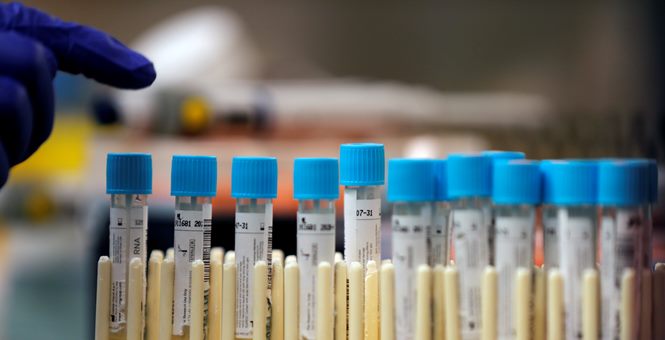Misguided Shutdown Policy Began as High School Science Project
By Larry O'Connor
TownHall.com

Source: AP
Photo/Gerald Herbert
As the nation slowly emerges from the social-distancing economic shut-down enacted to slow the spread of COVID-19, it would be wise to examine how and why our governors and federal agencies made the decisions they made that resulted in over 36 million people losing their jobs and untold cases of stress, anxiety, depression, and death.
Never before in modern history has a civilization embarked upon a wide-spread quarantine of healthy individuals to protect against the spread of disease. Never.
So, how did we come to make such a stunning and possibly calamitous decision?
Would you believe it all started with a 15-year-old's science project?
Laura Glass of Albequerque, NM was participating in the Intel International Science and Engineering Fair in 2006. At the time, the Albuquerque Journal reported on her project.
Glass's work involved the creation of a virtual town of 10,000 people— a computerized world where she could experiment on the spread of a disease such as the Spanish flu of 1918, which killed an estimated 50 million to 100 million people worldwide.
...
The simple way to halt the spread of the disease is to limit the number of contacts people have. Quarantining people is hard. "If you went out and told everyone in your community to stay home, there's a large percentage that wouldn't do that," she said.
Glass found that a simpler step— closing the schools— had an impressive effect.
Instead of 5,000 people getting sick, the number was reduced to 500.
Dr. Drew Pinsky, who has worked in the past with Dr. Anthony Fauci and has extensive knowledge of infectious diseases, says the science project then got elevated to national prominence.
"Her father, a computer modeler, put together a program that modeled this on a larger scale," Pinsky says. "He and she then published a paper in 2006 that the Bush Administration adopted as policy. And if you read the paper, they don't really recommend lockdown, they recommend regional sorts of closures but nothing like lockdown."
Yet, here we are, in the midst of the first quarantine of healthy people in human history.
As tens of millions are suffering without jobs or income and are trying to cope with the economic stress of a collapsing economy, The New York Times has been busy writing puff pieces praising the policy and its high school genesis.
Dr. Glass’s daughter Laura, then 14, had done a class project in which she built a model of social networks at her Albuquerque high school, and when Dr. Glass looked at it, he was intrigued.
Students are so closely tied together — in social networks and on school buses and in classrooms — that they were a near-perfect vehicle for a contagious disease to spread.
Dr. Glass piggybacked on his daughter’s work to explore with her what effect breaking up these networks would have on knocking down the disease.
The outcome of their research was startling. By closing the schools in a hypothetical town of 10,000 people, only 500 people got sick. If they remained open, half of the population would be infected.
However, as it pertains to COVID-19, the science project has a couple of somewhat flawed premises. The first has to do with the virus's effect on children as compared to influenza.
"In influenza, which is a disease transmitted by children and really hurts children, unlike COVID, you could significantly reduce community outbreaks by closing schools," Pinsky said in describing Glass's science project. However, we don't have a clear scientific understanding of how or whether COVID-19 spreads among school-aged children.
Two weeks ago, Daniel Koch, the Swiss chief of infectious diseases (think Fauci with a Swiss army knife), said a study of children under ten had determined that kids "are not infected and do not transmit the virus." "They just don't have the receptors to catch the disease," he said. On the strength of other studies in Europe, Denmark and Germany have re-opened their schools.
Meanwhile, what we do know about COVID-19 actually argues against the science project approach we have taken.
"Never before in human history was it contemplated that we would lock down healthy people. Quarantine is what you do to sick people," Pinsky says. "The only time in human history that there had been a lockdown of healthy people was in medieval ages, in medieval times where it worked against them. Because transmission accelerated indoors both with the plague and with tuberculosis and the other outbreaks."
Does "the science" support continuing the lockdowns and social distancing? Did it ever support these devastating policies?
No, Pinsky says, emphatically.
"They keep saying this is science, this is science... no, no, this is a model," he said. "This is a point of view, and it needs modification, and there is yet no actual science that says masks and distancing is inferior to a lockdown."
Maybe we need a teenager to come up with a better idea for next year's science fair since this year's was canceled.

